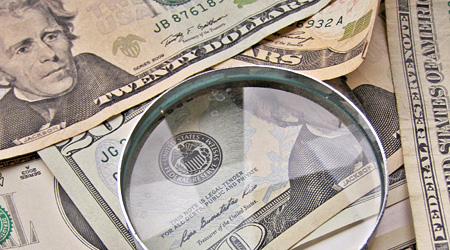Six Simple Ways to Improve Your Budget

When it comes to budgeting, I think a lot of people expect that they'll sit down with a few weeks worth of receipts and a pad of paper, do a little math, and create a household budget so perfect and balanced and practical that it won't need adjustments or changes - ever.
And this is where so many folks run into trouble. We tend to see budgets as things that are set in stone - and if our carefully-planned budgets don't work as well in practice as they did in theory, we see failure. We throw in the towel, blame ourselves, shake our fists at our Excel spreadsheets and go on with our impulse-purchasing, overspending ways.
Here's the thing, though: Making a budget is just a (very, very) small part of successful budgeting. If you want to make your budget work, you have to go back and make adjustments every now and then. You might find that you didn't allow yourself enough money for groceries, or that your budget is sorely lacking in fun money. Put another way: A good budget is not set in stone. A good budget should be a work in progress - the more you refine and adjust it, the more successful it will be.
Here are six ways you can make your budget better:
1. Do a reality check. Yes, budgets are supposed to help you stop overspending - but they're not supposed to stop you from spending altogether. If you can't live on the $20 a month you allowed yourself for groceries, it's time to make a change. A good budget should allow you to pay your monthly bills, get to and from work, feed yourself, put a nice chunk in savings, and - gasp! - even have a little fun. And speaking of fun . . .
2. Don't cut fun out of your budget. Seriously. If your budget doesn't include a little "fun money" - that is, money that you can spend on anything you want, no matter how frivolous or unnecessary - you're not likely to stick to it for long. Keep in mind, though: Spend your fun money wisely. Once it's gone for the month, it's gone.
3. Prepare for emergencies. You probably know that I'm a big believer in having an emergency fund. And with good reason: You never know what's around the corner - especially in today's economy. No matter how carefully you stick to your budget, an unexpected home repair, a sudden illness, or a layoff can spell financial disaster if you don't have money set aside for emergencies. Your monthly budget should include putting a set amount (even if it's only $20 or $30) into an emergency fund that's separate from your savings account.
4. Make it personal. It's important to remember that your budget is, well, yours. It should reflect your lifestyle, your expenses, and the things that are important to you. If you've got a long commute to work, make sure you're budgeting enough every month to cover gas, as well as associated expenses like car maintenance and tolls. If charitable giving is important to you, make sure that you include that in your budget, too. And, make sure that you're actually budgeting in a way that you're comfortable with - if you're a technophobe, there's no reason to use fancy budgeting software. A pad of paper and a pencil work just fine. If you're an on-the-go type, you might prefer tracking your expenses on your smartphone instead.
5. Have a goal. It's a lot easier - and a lot more fun and fulfilling - to stick to a budget if you're working toward a specific, measurable goal. Maybe you're trying to pay off that high-interest credit card or save up for a down payment on a home. Maybe your goal is to have $2,000 in your emergency fund. Maybe it's something as simple as cutting your grocery bill down by $20 a month. Don't have a goal? Make one. Use your budget as a tool to work toward it. And once you've met that goal, set a new one.
6. Be patient. Chances are, you'll have to make several adjustments to your budget before you get it exactly right - and, as I mentioned earlier, that's okay. Don't worry about perfection - at least, not right away. It may take months to find the budget that's right for you.







